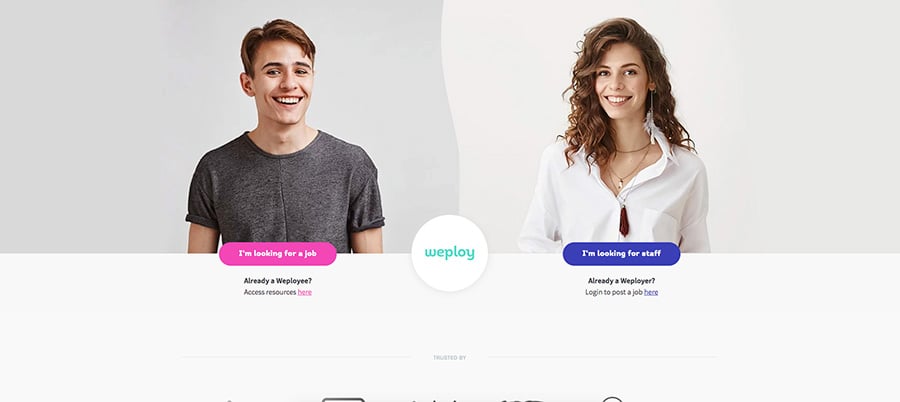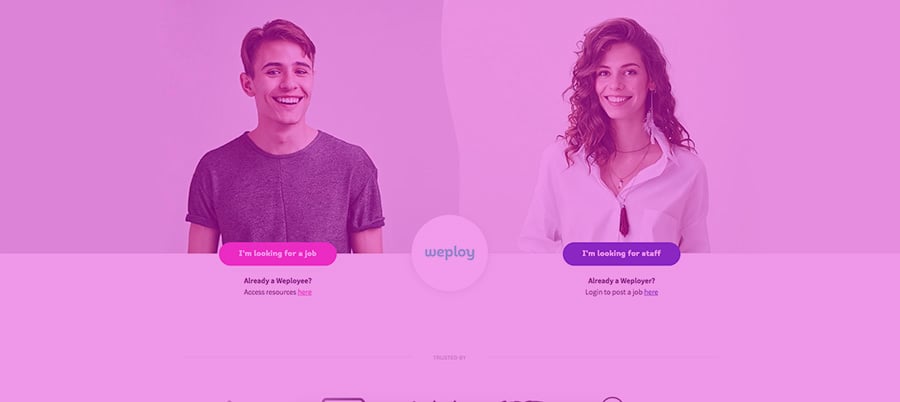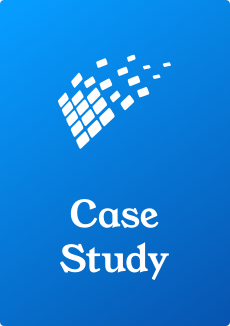- Getting the Most out of a Marketing Integration
- Making Sales Run Smoothly
- Retention and Upsell Strategies
- How to Approach an Integration
- Understanding your Lifecycle Stages as a SaaS Business
- HubSpot's Development Platform
Data is the lifeblood of any business, particularly for SaaS businesses as the data is at your fingertips. By connecting the dots and considering your integration between your SaaS platform and HubSpot, you can add efficiencies across the whole business. If you read through this and still are not too sure how to action this, don't worry! Give us a yell and we can help you out 😇
By considering how customers engage with your platform throughout your buyer’s journey - from initial touches through to using the platform and exiting - you can identify key events that can assist in understanding your customers better, providing a better experience and giving helpful data to your marketing, sales and product teams.
- The marketing team will be able to have insight into where their resources are best spent.
- The sales team will only spend time with leads that have a high chance of converting.
- The product team will be able to have a clearer insight into churn.
- The C level will be able to access dashboards and quickly see how the business is performing across marketing, sales and product.
Most importantly, your customers get a better experience with the ability to send them the most relevant and helpful information for what stage they are at. Score!
Getting the most out of a marketing integration
A key aspect of getting a SaaS business humming is to optimise the cost of acquiring new customers. While this is typically a marketing question, product-led strategies like free trials are requiring the alignment of marketing and product conversations.
What does this look like?
If you have a free trial offer then how the customer interacts with the product during that period is key information that can help the marketing team understand if the product is resonating with the market they are advertising or crafting messaging for.
The first step would be to use the HubSpot API to send data into HubSpot when someone signs up for a free trial, but you should also consider using events when a trial user interacts with specific areas of the product that could identify them as a good fit as a customer.
By sending this data back to HubSpot from your platform, it also allows the marketing team to start answering important questions like:
- Do trial users need more on-boarding to become better opportunities?
- Are the messaging and assets used to generate traffic leading to traffic that is engaging with the platform in a meaningful way?
- Where do our ‘stickiest’ (highest platform utilisation) customers come from?
- Where do our highest LTV customers come from?
- Which source gives us the shortest days-to-close?
Making sales run smoothly
With data being passed from the platform to HubSpot, it gives salespeople key information to help them spend their time where they will get the best result. It’s going to be more worthwhile talking with a user who is constantly in the platform and testing our features rather than one that has signed up - but hasn’t logged into the platform yet.
By combining the data from events from your SaaS platform with events and lead scoring in HubSpot, you can quickly provide focus for the sales team and also insight into what problems the user might be having when using the platform.
Retention and up-sell strategies
Getting customers in the door is just part of the battle. To drive down churn and increase lifetime value, continuing to monitor customer activity and provide the right messages to them at the right time is key.
If a customer is trying to access a paid or premium feature, it’s a prime time to engage with an offer or sales conversation to see what they are trying to achieve.
You could trigger marketing automation to help users get more value out of the platform if their activity is low or diminishing or just a particular part of the platform.
Some more fun things you can do with a HubSpot integration:
- Automated renewal reminders based on platform subscription data
- With HubSpot’s transactional email add-on, you’re able to send automated transactional emails
- Reinforce the desirable behaviours of your customers with automation by ‘gamifying’ their experience based on how they’re using your platform
- Reward them based on their behaviours, eg. a free month of subscription
- Seek reviews and NPS responses from high-utilisation customers
- Social proof is the best sort of proof!
- Invite high-utilisation customers to your beta program; involve them in the direction of your platform
- Beta testing is a win-win; validation of features for product owners/product managers, as well as engaging customers more deeply with your company culture
Needless to say, the above is a list of general benefits; there will no doubt be more contextual and micro-level benefits for your industry's niche. The main point being, integrating your platform with your HubSpot portal allows you to easily engage with your existing customers to keep them happy and to drive retention (which is a demand generation tactic in itself), as well as using your juicy data to inform marketing strategies.
Now that you’ve got a firm handle on the benefits of platform integration, building a business case to support this should be straightforward. Here’s how it’s done 😎
How to approach an integration
- Map out the key steps and actions of how a user interacts with your platform.
These might be: - Free trial sign up
- Login
- Accessing a paid or premium feature
- Accessing key functionality in your platform
- Identify information available at each of the actions
This information could be related to a: - Find the relevant HubSpot API to send the information
- Test
- Setup any workflows, lead-scoring or reporting in HS to best use the data
Understanding your lifecycle stages as a SaaS business
As the majority of your integration, or flow, to HubSpot will drive towards prospect qualification fit. It’s a timely point to review and acknowledge the main difference (needs) with a product-led strategy is to adjust your approach to lifecycle management or a buyer’s journey. Often trialists or free users are marked as a MQL or PQL too soon. By adjusting your lifecycle stages to better suit free trials or free plan users will make the world of difference as we guide you on integrating your platform whilst also providing what we all crave, meaningful (reliable) data or reports. Finally, a good exercise with your team is to revisit, if required, the buyer’s journey in full.
HubSpot’s Development Platform
Fortunately, HubSpot is a very open and developer-friendly platform, which uses popular web technologies within it’s API - the stateless REST architectural style, and JSON as the payload for any exchanged data objects.
A couple of years ago now HubSpot introduced a robust platform for development, which allows for deeper integrations and customisation of the contact record. New APIs were introduced which enabled these deeper integrations. These are the Timeline APIs, Webhooks APIs, and CRM extensions APIs. Likewise, recently the Tracking Code API was exposed, finally granting the ability for dynamic single page applications (SPAs) to be easily and accurately tracked using HubSpot.
Side note: HubSpot has an active development community, which is frequented by HubSpot product managers and engineers alike. This is a great place to get help if you’re stuck, or to report anything you think might be a bug.
A few of these APIs are currently a part of HubSpot’s Developer Preview program, which I would highly encourage you to follow and get involved in; in my experience, HubSpot’s APIs are robust, even those in Beta, but the possibility exists that things may break or change prior to release. Check out the changelog here.
Some of the key APIs that would you help you achieve the ideas in this article:
Forms API
Now accepting cross origin AJAX requests, you can submit form data directly to HubSpot client-side using JavaScript, making it easier than ever to implement. This is a great place to get started to collect data from free trial sign up forms. Make sure you are sending the HubSpot tracking cookie with the request so that the users' previous activity on the site and their source data is correctly sent to HubSpot.
Contacts API
The next most useful API in our scenario, need to update a contact without worrying about a form submission? This one’s your guy.
Deals API
Create or update deals based on user actions in your platform.
Products API
Dealing with products? This goes hand in hand with the Deals API to give more detail to your sales team.
Companies API
Create or update companies. Make sure you’re marketing and sales team has the most accurate data on company information as details change over time.
Events API
Trigger events in HubSpot from user actions on your platform. Note: Events will only be processed for accounts with an Enterprise Marketing subscription.
Timeline API
The Timeline API allows ‘events’ to be defined and then to appear on a contact record based on triggers within your platform. Think events for PQLs when paywalls are hit, new subscriptions, and so on. This opens up endless possibilities as timeline events can be used as conditions within list segmentation, automation triggering and reporting within the platform, in the same way, that any field within HubSpot can.
Tracking Code API
Need to track page views correctly for your single-page application?
Tickets API
Note: still part of the developer preview program
Create and manage help and support tickets with data from your platform.
Webhooks API
Gone are the days when developers had to implement expensive API polling processes to pull in changes! The Webhooks API allows change ‘subscriptions’ to be created, which will push changes to a specified API endpoint within your infrastructure to notify of any changes as they occur. This simplifies the creation of a two-way integration and enables immediacy as opposed to having to wait for a polling interval to occur.
Conclusion
Getting the correct data in front of the right people at the right time, whether they are marketers, salespeople or even your customers, is a great way to make sure you’re maximising opportunities. While setting up an integration between your platform and HubSpot can be a daunting task and may seem like time you can't afford to spend right now, there’s definitely benefit to all involved.
Want to see our skills in action?









